
Captain Noel Godfrey Chavasse, was an English medical doctor, Olympic athlete, and British Army officer from the Chavasse family. He is one of three people to be awarded a Victoria Cross twice, the others being Arthur Martin-Leake and Charles Upham.

Lieutenant Colonel Arthur Martin-Leake, was an English physician, officer in the Royal Army Medical Corps and a double recipient of the Victoria Cross (VC), the highest award for gallantry in the face of the enemy that can be awarded to British and Commonwealth forces. Martin-Leake was the first of three men to be awarded the VC twice, the others being Noel Godfrey Chavasse and Charles Upham.

William Barnsley Allen was a British Army medical officer who was decorated for gallantry four times during the First World War, including an award of the Victoria Cross, the highest award for gallantry in the face of the enemy that can be awarded to British and Commonwealth forces.

Richard William Leslie Wain VC was a Welsh recipient of the Victoria Cross, the highest and most prestigious award for gallantry in the face of the enemy that can be awarded to British and Commonwealth forces.
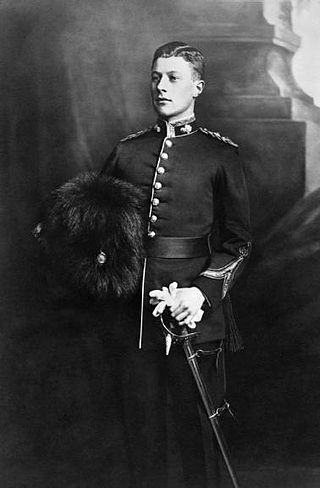
Maurice James Dease VC was an Irish recipient of the Victoria Cross, the highest and most prestigious award for gallantry in the face of the enemy that can be awarded to British and Commonwealth forces. He was one of the first British officer battle casualties of the war and the first officer to posthumously receive the Victoria Cross.

James Anson Otho Brooke VC was a Scottish recipient of the Victoria Cross, the highest and most prestigious award for gallantry in the face of the enemy that can be awarded to British and Commonwealth forces.

General Sir Garrett O'Moore Creagh,, known as Sir O'Moore Creagh, was a senior British Army officer and an Irish recipient of the Victoria Cross, the highest award for gallantry in the face of the enemy that can be awarded to British and Commonwealth forces.
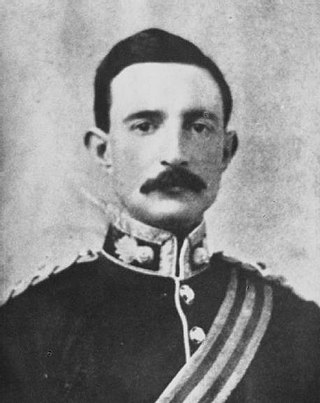
Brigadier-General Charles FitzClarence, VC was an Anglo-Irish recipient of the Victoria Cross, the highest and most prestigious award for gallantry in the face of the enemy that can be awarded to British and Commonwealth forces.

Colonel Conwyn Mansel-Jones was an English British Army officer. He was a recipient of the Victoria Cross, the highest and most prestigious award for gallantry in the face of the enemy that can be awarded to British and Commonwealth forces.
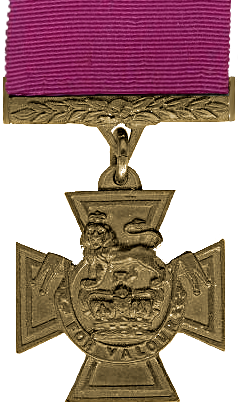
Thomas Duffy VC, born in Mount Temple (Caulry), Athlone, County Westmeath, was an Irish recipient of the Victoria Cross, the highest and most prestigious award for gallantry in the face of the enemy that can be awarded to British and Commonwealth forces.

Captain John Fox Russell, VC, MC was a Welsh physician, a British Army officer and a recipient of the Victoria Cross, the highest award for gallantry in the face of the enemy that can be awarded to British and Commonwealth forces.
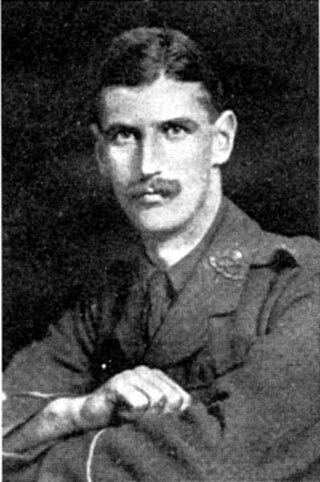
John Leslie Green VC was an English recipient of the Victoria Cross, the highest and most prestigious award for gallantry in the face of the enemy that can be awarded to British and Commonwealth forces. An officer in the Royal Army Medical Corps, he served on attachment to The Sherwood Foresters during the First World War. He was posthumously awarded the VC for his actions on 1 July 1916, during the Battle of the Somme.
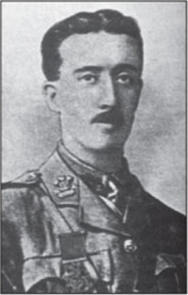
Major John Vincent Holland VC, was World War I Irish soldier, and the recipient of the Victoria Cross, the highest award for gallantry in the face of the enemy that can be awarded to British and Commonwealth forces.

Major General Hamilton Lyster Reed,, was an Irish British Army officer, and recipient of the Victoria Cross, the highest and most prestigious award for gallantry in the face of the enemy that can be awarded to British and Commonwealth forces.

Brigadier-General Francis Aylmer Maxwell, was a British Army officer in the Second Boer War and First World War. He was also a recipient of the Victoria Cross (VC), the highest award for gallantry in the face of the enemy that can be awarded to British and Commonwealth forces.
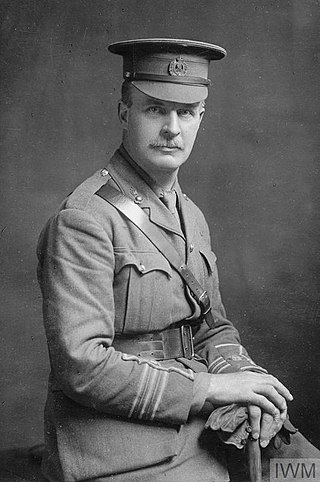
Major General Clifford Coffin was a British Army officer and recipient of the Victoria Cross, the highest and most prestigious award for gallantry in the face of the enemy that can be awarded to British and Commonwealth forces.

Tyne Cot Commonwealth War Graves Cemetery and Memorial to the Missing is a Commonwealth War Graves Commission (CWGC) burial ground for the dead of the First World War in the Ypres Salient on the Western Front. It is the largest cemetery for Commonwealth forces in the world, for any war. The cemetery and its surrounding memorial are located outside Passendale, near Zonnebeke in Belgium.

Henry Reynolds was an English recipient of the Victoria Cross, the highest and most prestigious award for gallantry in the face of the enemy that can be awarded to British and Commonwealth forces.

Oxford Road Cemetery is a Commonwealth War Graves Commission burial ground for the dead of the First World War located near Ypres (Ieper) in Belgium on the Western Front.
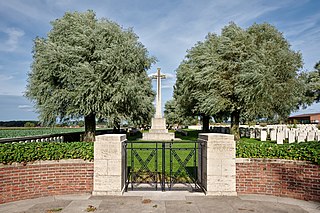
PerthCemetery is a Commonwealth War Graves Commission burial ground for the dead of the First World War located near Ypres (Ieper) in Belgium on the Western Front.



















